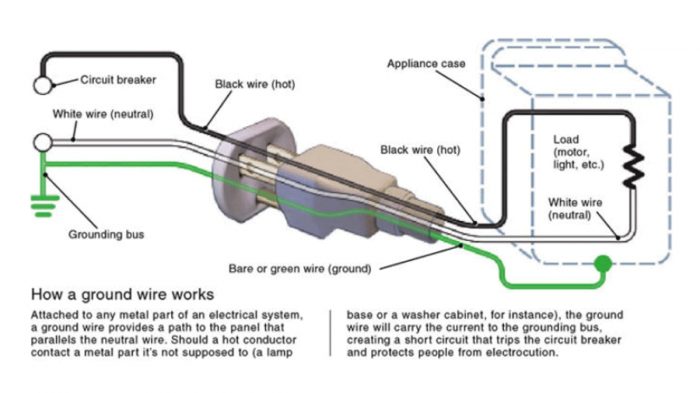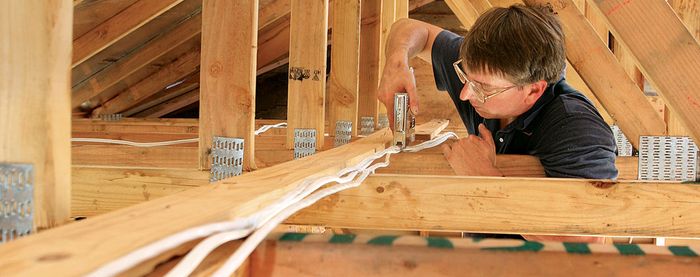Should I Upgrade Ungrounded Outlets?
Two-prong receptacles no longer meet electrical codes for safety, but you have some options for how to rewire them.

My house dates back to the 1950s. The electrical system includes a mix of grounded receptacles (three prongs) and what I assume are ungrounded ones (two prongs). The ungrounded receptacles work just fine, so I’m wondering if I need to upgrade them. What’s the reason behind the grounding system?
— Gerry Kline, via email
CJ Nielsen: Is my old wiring safe? This is a common question and one that’s not always easy to answer. The quality and safety of our electrical panels, cable, breakers and outlets, and fixtures have all improved with time. And electrical codes have evolved to make residential wiring safer than ever. If you begin a remodeling project that involves electrical work, your inspector will likely require that you upgrade your system to meet current codes. If you’re not involved in a project, but know that you system is out-of-date, then you have a decision to make. One of the most common situations involves ungrounded outlets.
Early 120v electrical systems were not required to have a ground prong. These systems consisted of only one hot and one neutral wire, and electrical appliances had plugs with only two prongs. The hot wire supplied the electrical current, and the neutral returned it to the source (the power plant) through the neutral wire at the street.
The three-prong, three-wire system—hot, neutral, and ground—became regular practice in the 1960s and is required by the National Electric Code for several applications. The difference between two-prong and three-prong receptacles is their ability to connect to an additional wire (technically known as a conductor) that runs to the grounding bus in the main panel. This conductor, known as the ground, is parallel to the neutral conductor, but normally doesn’t carry any electricity.
So why do we need a ground? If a damaged, frayed, or loose wire comes in contact with anything metallic, it will treat this object as a conductor, thus electrifying it. Electrified metallic objects—which can be anything from a lamp base to a blender or a plumbing pipe—pose a deadly hazard of electrocution to anyone in direct contact with them.
The idea behind a grounded three-wire system is that all metallic objects are interconnected by the grounding conductor, which leads to the grounding bus, so if a damaged, frayed, or loose wire comes in contact with a metallic object connected to the grounding system, it will cause a ground fault (a short circuit) and trip the circuit breaker or blow the fuse.
Three-prong plugs are strictly for safety, and it’s a good idea to upgrade to them. You can install a ground wire from new three-prong receptacles back to the panel, or replace the wiring on the circuits completely using standard two-conductor-plus-ground cable. The easiest approach, though, is to install three-prong GFCI receptacles, which trip when they detect a ground fault, with no ground wire in place. Be sure to use the stickers included with the GFCI to mark it “no equipment ground.”
From Fine Homebuilding #272






View Comments
I also live in an older house and even though most of the wiring has been replaced with romex with a ground, the installer clipped all the ground wires off rather than hook them up (virtually the same amount of effort) so most of our outlets aren't grounded, including the GFCI in the bathroom. Will that really work without a ground wire as stated in the article?